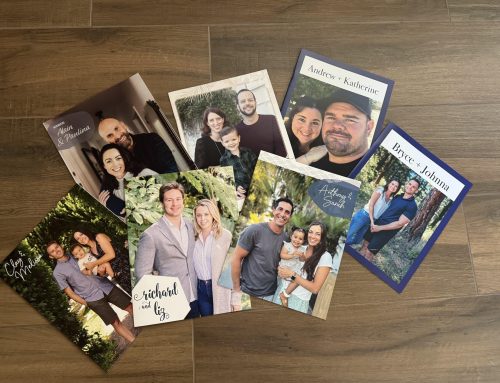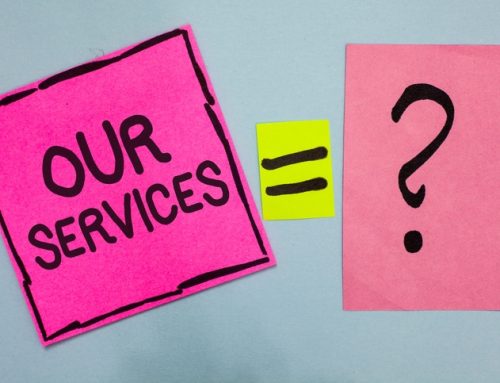
Are you considering adoption as a way to grow your family, but you have no idea where to begin? This post will help you better understand the process of adopting a child domestically in the United States and help you determine if it is the right choice for your family. It will also help you determine if you’d like to have an adoption advisor, otherwise known as an adoption guide, in our adoption journey.
Educate, Educate, Educate
Many people considering adoption have a rosy view of adoption, they picture adoptive parents as saviors to a child who is “so lucky” to have been adopted. Part of my goal during this National Adoption Awareness Month is to help educate families before they start the adoption process that adoption is not all sunshine and rainbows. Adoption begins with loss, and most adoptees feel a deep sense of loss when they fully comprehend their adoption, and they are often uncomfortable sharing their pain because they are often expected to feel grateful. My recommendation for anyone considering adoption is to start by educating yourselves on all aspects of adoption, from many different perspectives. Take particular notice of the perspectives of adult adoptees, but also listen to birth mothers and adoptive parents of older or grown children. Understand their pain and their experiences, and make sure you are strong enough as a parent to help your child navigate through it later in life. Parenting is hard no matter what, but adoption adds another dimension. You should also educate yourself about open adoption, and how much better that situation can be for your future child to have some connection and awareness of where they came from. Just like you need to have grieved your infertility before adoption, I want to make sure you’ve also taken the time to understand all facets of adoption before pursuing that path to grow your family. There is an amazing Adoption Community online to learn from, I hope that you will take the time to start there in your adoption process.
Hire an Adoption Advisor
We also encourage everyone who is considering adoption to start their process by hiring someone like Purl, an adoption advisor (otherwise known as adoption guide, adoption planner or adoption coach) to walk you through the process and direct you to experienced attorneys and agencies. Having someone help you determine when to take each step and how to complete them is invaluable. They provide you necessary counsel throughout the emotional process and can provide you tips on what has worked well for other adoptive families. Now, not all adoption advisors are created equal, and we have created a video to help families understand the adoption advisor’s role and how to choose the best one for your family.
Complete a Home Study
The home study is an evaluation of a prospective adoptive family that is required by law. Each state’s laws are slightly different, but it typically involves education of the adoption process, background checks, medical evaluations, references from friends and family and A LOT of paperwork. You typically will meet with a social worker a few times, he/she completes a relatively informal interview and inspection of your home and writes an evaluation regarding your ability to provide a safe and secure home for a child. While this step can be intimidating, it is relatively straightforward and gathering the necessary paperwork is usually the hardest part. A few states (including Arizona) require that the home study be submitted to and approved by the Court. In a few states you can adopt without beginning the home study first (namely California), but that is a necessary step in most states. During your home study, you might be asked what type of child you are open to in your adoption. Your home study agency and your adoption advisor can help you determine your own preferences as it relates to race, gender, drug exposure in utero, mental illness in the birth family, as well as any special needs.
Create Your Family Profile and Adoption Outreach Materials
Your family profile is a sort of family scrapbook that expectant parents review when they are selecting the adoptive family to raise their child. Given that this is how a family is chosen in an agency or attorney adoption, this is one of the most important pieces of the adoption puzzle. At Purl, we create family profiles as part of our Advisement Packages, but we also sell them a la carte. We don’t care if you use us for your family profile design, or one of the other amazing professionals out there like Kindred & Co., but we do hope you take the time and effort needed to portray yourselves authentically in your profile.
These days, more and more expectant parents are finding the adoptive parents for their child online through websites and social media instead of utilizing an adoption agency, so you might want to consider Adoption Outreach as well. We believe that self-matching (or independent adoption) is a great way to adopt, but it is important to still ensure that both sides of the adoption are represented by experienced adoption attorneys, and that the birth family is given the support and counseling they need during their pregnancy and beyond. Your advisor can help ensure that you involve professionals for these services in a timely manner, even if you match without the help of an adoption agency or attorney.
Funding Your Adoption
The cost of adoption varies significantly, but can be very high if you use some placing agencies or attorneys. It is important for adoptive families to prepare for the cost of adoption by applying for available grants, adoption loans, engaging in creative fundraising, and accessing tax credits and employer benefits so that adoptive families have the resources necessary to be available to present to situations that arise. An adoption advisor can also guide families through this process and provide a list of funding resources to help offset the cost of adoption.
Use A Hybrid Approach to Adoption
It used to be that people would sign up with a local adoption agency and then just wait to be chosen by an expectant family working with that agency. That method can be great, but it can also be slow. We believe the best method to adopt well and relatively quickly is using a multi-attorney/agency approach through an adoption advisor or adoption guide, with at least a little bit of adoption outreach. This approach gives greater exposure to many different types of adoption opportunities. Most families can adopt within a year utilizing this type of approach, with a longer time if you are particular about the child you would like to adopt (i.e. gender, ethnicity, openness to drug exposure/mental health issues, desired openness level). You also have someone to talk to throughout your adoption who has personally experienced this unique process.
Be Chosen By An Expectant Family Considering Adoption
Once you have completed your home study and your profile is with multiple attorneys and agencies, you can be presented to expectant families considering adoption for their child. When an attorney, agency or your adoption advisor is contacted about a situation that matches your preferences, you are typically given basic information available on the adoption situation (i.e. cost, health of the baby, race, gender, etc.) and have the opportunity to discuss the situation further with your advisor and/or attorney and determine whether you’d like to be presented to the expectant parents. Most attorneys/agencies will give between 3-15 adoption profiles to expectant parents to choose from. The expectant parents then choose the adoptive family they want to raise their child. Once a match is made, the adoptive parents may talk to the expectant parents via phone or email, or even travel to meet them in person. If they live nearby, the adoptive parents may even attend doctor’s appointments and get to know the expectant parents before the child is born. However, many of our families are prepared for an emergency situation or a “baby born situation” where the baby is already born and the family immediately travels to pick up the child from the hospital. Once a family is chosen, we recommend our families engage legal counsel experienced in the law that will apply to the adoption to decrease the risk in the adoption. But it is important to remember that just because you have been chosen, that doesn’t mean that this child is yours. That expectant family may change their mind and decide to parent, or might make alternative arrangements where a family member steps up to adopt and care for the child. Later this week I will talk more about this and the love and respect we need to feel for these families facing difficult choices, and while it can be painful for an adoptive family to experience a disruption, it just means a biological family can stay together and another child was meant for your arms.
Placement
Once the baby is born and the expectant mother executes consents relating to the adoption, the baby is typically placed with the adoptive family, usually within the first 72 hours of the birth or soon after. The consents are typically irrevocable once signed in the states we work in most frequently. At that time, physical custody is granted to the adoptive family. If your adoption is an interstate adoption (the expectant family lives in a different state than you do), you will have to wait in the birth state for approximately 5-15 business days in order to be cleared by the birth state and your home state as part of the Interstate Compact for the Placement for Children.
Post Placement
Each state requires a post placement supervision period of anywhere from one to nine months. During this time a social worker makes regular contact with the adoptive parents to ensure the placement is going well and provide any needed support for the family before the adoption is finalized.
Finalization
After the required post placement supervision, a finalization hearing is typically held where a judge will sign the final judgment decreeing the adoptive parents as the child’s parents. Depending on your state’s laws, you might finalize your adoption in the state the child was born in or your home state, you’ll want to discuss these options with your advisor and your adoption attorney to determine the best choice of law for your adoption.
The adoption process can be overwhelming and intimidating. Having an adoption advisor or adoption coach who has walked in your shoes and is connected in the adoption community is important to minimizing risk and stress in an adoption. We hope you will consider becoming a Purl Family and letting us guide you through this journey! Please subscribe to our newsletter on the bottom of this page to learn more about the adoption process and if you are interested in a free consultation, we hope you will contact us.

Are you considering adoption as a way to grow your family, but you have no idea where to begin? This post will help you better understand the process of adopting a child domestically in the United States and help you determine if it is the right choice for your family. It will also help you determine if you’d like to have an adoption advisor, otherwise known as an adoption guide, in our adoption journey.
Educate, Educate, Educate
Many people considering adoption have a rosy view of adoption, they picture adoptive parents as saviors to a child who is “so lucky” to have been adopted. Part of my goal during this National Adoption Awareness Month is to help educate families before they start the adoption process that adoption is not all sunshine and rainbows. Adoption begins with loss, and most adoptees feel a deep sense of loss when they fully comprehend their adoption, and they are often uncomfortable sharing their pain because they are often expected to feel grateful. My recommendation for anyone considering adoption is to start by educating yourselves on all aspects of adoption, from many different perspectives. Take particular notice of the perspectives of adult adoptees, but also listen to birth mothers and adoptive parents of older or grown children. Understand their pain and their experiences, and make sure you are strong enough as a parent to help your child navigate through it later in life. Parenting is hard no matter what, but adoption adds another dimension. You should also educate yourself about open adoption, and how much better that situation can be for your future child to have some connection and awareness of where they came from. Just like you need to have grieved your infertility before adoption, I want to make sure you’ve also taken the time to understand all facets of adoption before pursuing that path to grow your family. There is an amazing Adoption Community online to learn from, I hope that you will take the time to start there in your adoption process.
Hire an Adoption Advisor
We also encourage everyone who is considering adoption to start their process by hiring someone like Purl, an adoption advisor (otherwise known as adoption guide, adoption planner or adoption coach) to walk you through the process and direct you to experienced attorneys and agencies. Having someone help you determine when to take each step and how to complete them is invaluable. They provide you necessary counsel throughout the emotional process and can provide you tips on what has worked well for other adoptive families. Now, not all adoption advisors are created equal, and we have created a video to help families understand the adoption advisor’s role and how to choose the best one for your family.
Complete a Home Study
The home study is an evaluation of a prospective adoptive family that is required by law. Each state’s laws are slightly different, but it typically involves education of the adoption process, background checks, medical evaluations, references from friends and family and A LOT of paperwork. You typically will meet with a social worker a few times, he/she completes a relatively informal interview and inspection of your home and writes an evaluation regarding your ability to provide a safe and secure home for a child. While this step can be intimidating, it is relatively straightforward and gathering the necessary paperwork is usually the hardest part. A few states (including Arizona) require that the home study be submitted to and approved by the Court. In a few states you can adopt without beginning the home study first (namely California), but that is a necessary step in most states. During your home study, you might be asked what type of child you are open to in your adoption. Your home study agency and your adoption advisor can help you determine your own preferences as it relates to race, gender, drug exposure in utero, mental illness in the birth family, as well as any special needs.
Create Your Family Profile and Adoption Outreach Materials
Your family profile is a sort of family scrapbook that expectant parents review when they are selecting the adoptive family to raise their child. Given that this is how a family is chosen in an agency or attorney adoption, this is one of the most important pieces of the adoption puzzle. At Purl, we create family profiles as part of our Advisement Packages, but we also sell them a la carte. We don’t care if you use us for your family profile design, or one of the other amazing professionals out there like Kindred & Co., but we do hope you take the time and effort needed to portray yourselves authentically in your profile.
These days, more and more expectant parents are finding the adoptive parents for their child online through websites and social media instead of utilizing an adoption agency, so you might want to consider Adoption Outreach as well. We believe that self-matching (or independent adoption) is a great way to adopt, but it is important to still ensure that both sides of the adoption are represented by experienced adoption attorneys, and that the birth family is given the support and counseling they need during their pregnancy and beyond. Your advisor can help ensure that you involve professionals for these services in a timely manner, even if you match without the help of an adoption agency or attorney.
Funding Your Adoption
The cost of adoption varies significantly, but can be very high if you use some placing agencies or attorneys. It is important for adoptive families to prepare for the cost of adoption by applying for available grants, adoption loans, engaging in creative fundraising, and accessing tax credits and employer benefits so that adoptive families have the resources necessary to be available to present to situations that arise. An adoption advisor can also guide families through this process and provide a list of funding resources to help offset the cost of adoption.
Use A Hybrid Approach to Adoption
It used to be that people would sign up with a local adoption agency and then just wait to be chosen by an expectant family working with that agency. That method can be great, but it can also be slow. We believe the best method to adopt well and relatively quickly is using a multi-attorney/agency approach through an adoption advisor or adoption guide, with at least a little bit of adoption outreach. This approach gives greater exposure to many different types of adoption opportunities. Most families can adopt within a year utilizing this type of approach, with a longer time if you are particular about the child you would like to adopt (i.e. gender, ethnicity, openness to drug exposure/mental health issues, desired openness level). You also have someone to talk to throughout your adoption who has personally experienced this unique process.
Be Chosen By An Expectant Family Considering Adoption
Once you have completed your home study and your profile is with multiple attorneys and agencies, you can be presented to expectant families considering adoption for their child. When an attorney, agency or your adoption advisor is contacted about a situation that matches your preferences, you are typically given basic information available on the adoption situation (i.e. cost, health of the baby, race, gender, etc.) and have the opportunity to discuss the situation further with your advisor and/or attorney and determine whether you’d like to be presented to the expectant parents. Most attorneys/agencies will give between 3-15 adoption profiles to expectant parents to choose from. The expectant parents then choose the adoptive family they want to raise their child. Once a match is made, the adoptive parents may talk to the expectant parents via phone or email, or even travel to meet them in person. If they live nearby, the adoptive parents may even attend doctor’s appointments and get to know the expectant parents before the child is born. However, many of our families are prepared for an emergency situation or a “baby born situation” where the baby is already born and the family immediately travels to pick up the child from the hospital. Once a family is chosen, we recommend our families engage legal counsel experienced in the law that will apply to the adoption to decrease the risk in the adoption. But it is important to remember that just because you have been chosen, that doesn’t mean that this child is yours. That expectant family may change their mind and decide to parent, or might make alternative arrangements where a family member steps up to adopt and care for the child. Later this week I will talk more about this and the love and respect we need to feel for these families facing difficult choices, and while it can be painful for an adoptive family to experience a disruption, it just means a biological family can stay together and another child was meant for your arms.
Placement
Once the baby is born and the expectant mother executes consents relating to the adoption, the baby is typically placed with the adoptive family, usually within the first 72 hours of the birth or soon after. The consents are typically irrevocable once signed in the states we work in most frequently. At that time, physical custody is granted to the adoptive family. If your adoption is an interstate adoption (the expectant family lives in a different state than you do), you will have to wait in the birth state for approximately 5-15 business days in order to be cleared by the birth state and your home state as part of the Interstate Compact for the Placement for Children.
Post Placement
Each state requires a post placement supervision period of anywhere from one to nine months. During this time a social worker makes regular contact with the adoptive parents to ensure the placement is going well and provide any needed support for the family before the adoption is finalized.
Finalization
After the required post placement supervision, a finalization hearing is typically held where a judge will sign the final judgment decreeing the adoptive parents as the child’s parents. Depending on your state’s laws, you might finalize your adoption in the state the child was born in or your home state, you’ll want to discuss these options with your advisor and your adoption attorney to determine the best choice of law for your adoption.
The adoption process can be overwhelming and intimidating. Having an adoption advisor or adoption coach who has walked in your shoes and is connected in the adoption community is important to minimizing risk and stress in an adoption. We hope you will consider becoming a Purl Family and letting us guide you through this journey! Please subscribe to our newsletter on the bottom of this page to learn more about the adoption process and if you are interested in a free consultation, we hope you will contact us.




